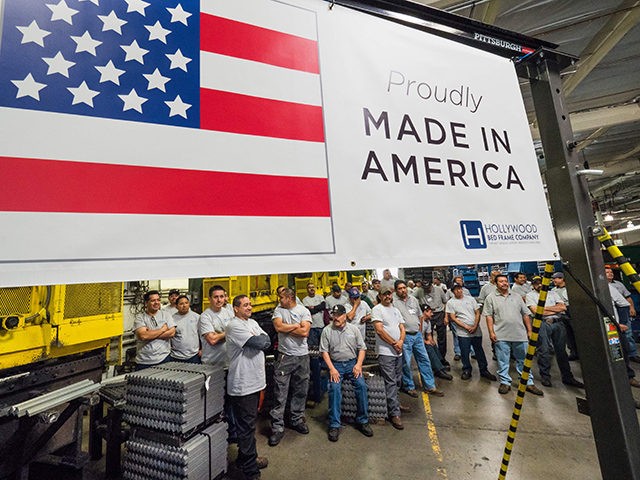The American labor market was strong in June, defying predictions that escalating trade tensions would be a drag.
Even in the manufacturing sector, which has shown some signs of sluggishness due to lower global growth, demand for labor remained high, according to data released by the Department of Labor Tuesday.
There were 503 positions waiting to be filled in manufacturing in June, the same record high level set in May. That marks the 18th consecutive month higher of manufacturing openings above 400,000.
Prior to the election of Donald Trump, open jobs in manufacturing had not exceeded 400,000 since March of 2001.
Reviving American manufacturing and restoring jobs for workers in the sector were key campaign promises of Donald Trump during the 2016 election cycle. While there is room for debate as to who should get credit for what is now the longest economic expansion in American history, it is clear from the data that Trump’s presidency has coincided with a boom in manufacturing jobs.
When President Trump put tariffs on steel and aluminum, critics predicted the higher costs of metals would weigh on U.S. manufacturers and cost U.S. factory workes their jobs. The ongoing strength of the U.S. labor market, particularly in manufacturing, has undermined this line of criticism.
Job openings in durable goods manufacturing came in at 319,000 for the month, in line with May’s revised 320,000. Prior to Donald Trump’s election, unfilled jobs in this sector had not exceeded 220,000 since before the last recession.
Nondurable goods manufacturing openings held steady at 183,000.
The number of unfilled jobs in the overall economy fell slightly in June to 7.35 million, down from 7.38 million the previous month. May was revised up from an initially reported 7.32 million, indicating the labor market was even stronger than thought. Both figures are close to record highs. June’s figure was 1.37 million above the number of unemployed persons.
Manufacturing hires declined to 324,000 from 340,000 the previous month, thanks entirely to a decline in nondurable goods hires. Durable goods hires actually climbed by 2,000 in June. This is the second consecutive decline in hires despite elevated levels of openings, confirming anecdotal reports that manufacturers are having trouble finding qualified workers. This may add pressure to employers to raise wages to attract new workers.
Layoffs once again defied predictions that the metals tariffs would cost factory jobs. There were just 103,000 layoffs and discharges in manufacturing in June, down from 112,000. That is a layoff rate of just 0.8 percent, exactly what it was 2 years ago, before tariffs kicked-in. Durable goods layoffs fell to 58,000 for a 0.7 percent rate.

COMMENTS
Please let us know if you're having issues with commenting.